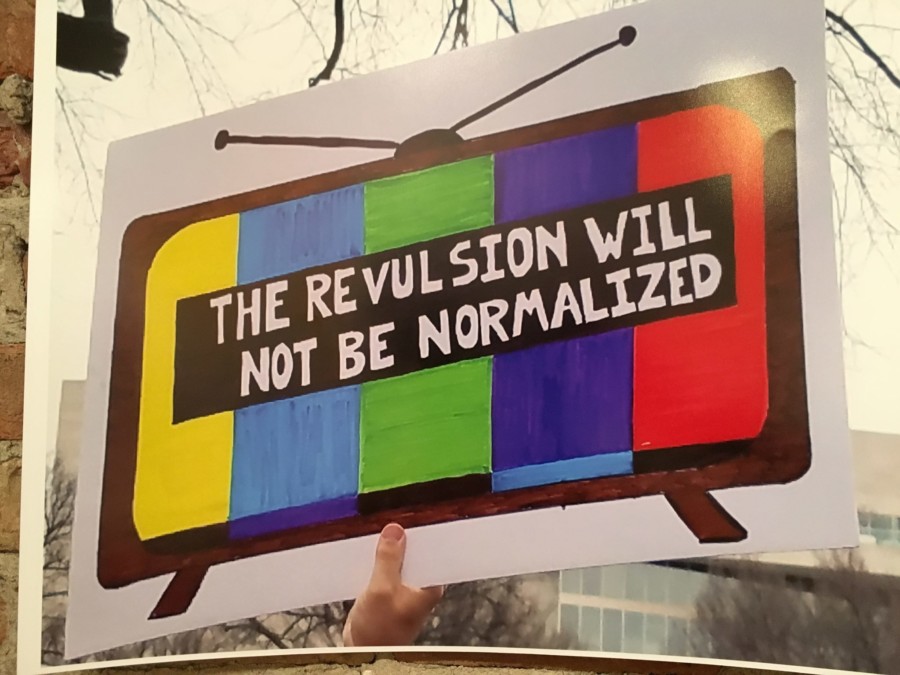Closing Reception: Silent Sentinels No More!
@ Uri-Eichen Gallery
2101 S Halsted St, Chicago, IL 60608
Opening Thursday, August 31st, from 7PM - 9:30PM
100 Years: 1917 and 2017
Silent Sentinels No More! The 1917 Night of Terror and Women Unite Against Trump
Group Show – Women’s Marches. Protest Posters and Photos from Holiday Gerry, Ellen Larrimore, Linda Loew, Darlene Seilheimer, Christopher Urias, Shelby Willford, and Heidi Zeiger. Mary Ann and Lucy McDonald’s original and a recreated Suffragette banner. Water Color and ink drawings of Trump’s Cabinet of Horrors by Emily Waters.
Opening Reception: 7pm Discussion with Artists and Film
Short Film: Why We March
Filmmakers: Laurie Little, Jess Mattison and Theresa Campagna
A reflection on the journey between Chicago and DC, connecting voices of hope, empowerment and intersectionality during The Women’s March, the largest protest in the history of the United States, as women and girls organize and rally after the inauguration of the 45th president. Two teams documented the march simultaneously in the two cities as women everywhere went on a journey to connect with their feminist roots. Focusing on intersectionality, mothers and daughters from every strata of the country reflect on the work that is to come for the women’s movement and how we can mobilize for change
Discussion Panel: Scholar/journalist Felicia Darnell, Lucy McDonald, filmmaker Laurie Little on the film. Discussion- Artists in group show- on the march!
Open by Appointment outside of receptions. For an appointment,
please call 312 852 7717
September: 8 Opening: Alison Jackson’s Private- “Donald Trump” Photos. 1917 -2017: What is Today’s “War for Democracy?” A second look at the Espionage Act.
The Night of Terror:The Silent Sentinals- On January 10, 1917, the group began their constant protest in front of the White House. Over the rest of the year, the women were arrested, with steadily worsening punishments, until in October, when Alice Paul was sentenced to seven months in prison. Other suffragists followed suit, and they were housed at Occoquan Workhouse.
There, Alice Paul was placed in solitary confinement with a diet of water and bread, which made her so weak that she had to be hospitalized, in which case she started a hunger strike. Other suffragist prisoners followed, and in response, the prison started force-feeding them.
On November 14, 1917, workhouse superintendent W. H. Whittaker ordered guards to brutalize the women. They were beaten, dragged, choked, kicked, and thrown. The night became known as the “Night of Terror.”
The treatment of the women hit the newspapers and got more of the public on their side. By November 28, 1917, all the protesters were released, and their victory only pushed them forward, the protests continuing in earnest.
Then, almost a year since the start of their protests in front of the White House, President Woodrow Wilson announced his support for the women’s suffrage movement on January 9, 1918. The Silent Sentinels then turned their attention to Congress, and by the end of 1918, most members of Congress supported the movement. By June 4, 1919, both houses of Congress had passed the amendment allowing women to vote.
Finally, on August 18, 1920, Tennessee became the 36th state to ratify the 19th amendment, thereby giving women in the United States the right to vote.
The Silent Sentinels were fierce, and their unwillingness to use a conservative approach and look at politicians as allies helped them hold the feet of President Wilson and Congress to the fire. They, along with other suffragists from around the United States, paved the way for women’s rights today.
From: nationalwomansparty.org
How does their struggle connect to women today and to the American public’s struggle to resist Trump?
Official Website
More events on this date
Tags: Chicago, Christopher Urias, Darlene Seilheimer, Ellen Larrimore, Emily Waters, Heidi Zeiger, Holiday Gerry, Linda Loew, Lower West Side, Lucy McDonald, Mary Ann, Shelby Willford, Silent Sentinels No More!, Uri-Eichen Gallery

« previous event
next event »